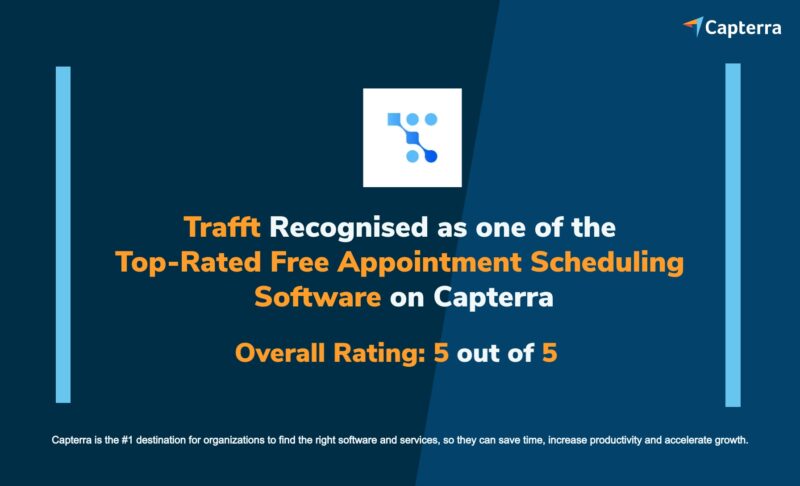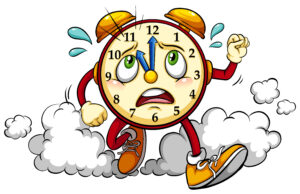Scheduling meetings can be harder than it seems, especially when dealing with busy professionals across different time zones. In this blog post, we will teach you how to find a meeting time that works for everyone and explore effective strategies and tools to find a meeting, ensuring seamless communication and collaboration.
But first, we’ll go over the importance of finding a meeting time that works for everyone and what you lose when you fail to achieve that.
What Happens When You Can’t Find a Meeting Time That Works for Everyone
- Back-and-Forth Communication Struggles
One of the most frustrating outcomes of failing to find a suitable meeting time is the endless cycle of back-and-forth communication. As team members attempt to align their schedules, they spend valuable time on a seemingly never-ending email chain or chat conversation. This not only leads to frustration but also destroys overall productivity. The constant need for clarification and adjustments can create a communication bottleneck, hindering the swift progress of projects.
- Impact on Revenue Generation
Time is money, and unsuccessful attempts at scheduling can directly impact revenue. Missed meetings, delays in decision-making, and the inability to coordinate with key stakeholders may result in lost opportunities and revenue. Businesses thrive on timely collaborations and swift decision-making, and when these processes are delayed due to scheduling conflicts, financial implications become inevitable.
- Unmet Goals and Project Delays
Effective collaboration is the cornerstone of achieving organizational goals. When a team struggles to find a meeting time that works for everyone, it disrupts the flow of information and decision-making, leading to unmet milestones and project delays. The inability to bring key players together for crucial discussions hinders progress, affecting the overall success of initiatives and goals.
- Increased Risk of Miscommunication
Scheduling challenges not only affect the timing of meetings but can also contribute to miscommunication. Attendees may miss important updates, fail to receive critical feedback or remain unaware of evolving project requirements. This lack of synchronization can result in misunderstandings, errors, and a breakdown in the collaborative process, ultimately impacting the quality of work produced.
Overcoming the challenges of finding a meeting time that works for everyone
Recognizing the detrimental consequences of unsuccessful meeting time coordination emphasizes the importance of implementing efficient scheduling practices. By adopting smart tools, clear communication strategies, and proactive planning, attendees and hosts can mitigate the risks associated with scheduling conflicts and ensure that their collaborative efforts remain focused, productive, and aligned with organizational objectives.
How to ask for a meeting time
When asking for a meeting time, be concise and considerate in your email, clearly stating the purpose, proposing a few potential time slots, and offering flexibility to accommodate the other person's schedule. A straightforward approach and providing options help streamline the scheduling process and increase the likelihood of a prompt response.
Best Practices for Finding a Meeting Time That Works for Everyone
-
Sync your calendars
To find a meeting time that works for everyone, sync your calendars with attendees or team members. This ensures real-time availability updates and minimizes the risk of conflicts.
-
Avoid double bookings
Prevent mistakes by utilizing scheduling tools that provide visibility into everyone's availability. This helps avoid double bookings and ensures that meetings are organized efficiently without overlapping commitments.
-
Send confirmations
After settling on a meeting time, send confirmation emails to all participants. This not only serves as a reminder but also reinforces the commitment, reducing the chances of misunderstandings or missed meetings.
-
Send reminders
In addition to confirmations, sending timely reminders is crucial to avoid no-shows, cancellations, or last-minute rescheduling. Automated reminders, whether through email or calendar apps, help participants stay on track and prioritize the scheduled meeting.
-
Utilize templates for booking
Save time and maintain consistency by using templates for scheduling emails. Having a standardized template ensures that you cover all necessary details, making the process smoother for both you and the participants.
-
Offer flexible options
When proposing meeting times, provide a range of options to accommodate varying schedules. Flexibility demonstrates consideration for participants' time constraints, increasing the likelihood of finding a mutually convenient slot.
-
Leverage smart scheduling tools
Explore advanced scheduling tools. Booking software like Trafft automates the scheduling process, allowing participants to choose from predefined time slots, minimizing the need for extensive back-and-forth communication.
-
Consider time zone differences
When scheduling international meetings, be mindful of time zone variations. Utilize tools that display multiple time zones or propose meeting times suitable for participants across different regions, ensuring inclusivity and convenience.
-
Set a clear meeting agenda and duration
Clearly communicate the purpose and agenda of the meeting, along with the expected duration. This helps participants prioritize their time, contributing to focused and efficient discussions during the scheduled meeting.
Finding a meeting time that works for everyone: email template
Subject: Scheduling a Meeting: Let's Find a Convenient Time
Hi [Recipient's Name],
I hope this email finds you well. I'm reaching out to schedule a meeting to discuss [briefly mention the purpose or agenda]. I've proposed a few time slots that work for me, but I'm flexible and open to alternatives. Please let me know which time suits you best, or feel free to suggest an alternative that works for you.
[Include proposed time slots]
Looking forward to our discussion.
Best regards,
[Your Name]
The Best Tool for Finding a Meeting Time That Works for Everyone
When it comes to effortlessly finding a meeting time that caters to everyone's availability, Trafft stands out as the go-to solution. Packed with user-friendly features and designed for efficiency, Trafft simplifies the scheduling process, making it the best tool for coordinating meetings among diverse participants.
Why Trafft is the best tool for finding a meeting time that works for everyone
Free for up to 5 users
Trafft recognizes the importance of accessibility and offers its services free of charge for smaller teams of up to 5 users. This ensures that even small businesses or collaborative projects can benefit from its powerful scheduling capabilities without breaking the bank.
Automated time zone detection
One of Trafft's standout features is its automated time zone detection. No more wrestling with time zone converters or miscalculations – Trafft seamlessly detects the time zones of all participants and shows an availability calendar with meeting times that align with their respective working hours. This eliminates the hassle of coordinating across global teams and ensures that everyone is on the same page, no matter where they are in the world.
Effortlessly find a time to meet
Trafft streamlines the process of finding a suitable meeting time. With a user-friendly interface, participants can input their time availability. This ensures that the proposed meeting times are convenient for all involved, promoting efficiency and collaboration.
Additional features for enhanced collaboration
- Tailor your availability calendar to reflect your unique schedule and preferences.
- Reduce the risk of no-shows or last-minute cancellations with Trafft's automated reminder feature.
- Save time by using pre-designed templates for scheduling emails, enhancing the overall efficiency of your communication.
- Two-way sync with most popular calendar options such as Google Calendar, iCal, and Outlook.
Example of Trafft in action
- Participants receive an intuitive interface to input their availability.
- Trafft proposes meeting times that accommodate everyone's schedules.
- Once a time is chosen, Trafft sends confirmations and automated reminders to ensure attendance.
It's time to leave scheduling conflicts in the past! Sign up for Trafft's free plan and find a meeting time that works for everyone easier than ever.

How to Find a Meeting Time for Group Appointments?
Finding a meeting time for a group requires a more strategic approach to accommodate multiple schedules and preferences.
Utilize the following steps and an example email template to simplify the process:
- Initiate the Group Scheduling Process
Determine the essential members who need to be part of the group meeting. Consider the diverse locations of participants and be mindful of time zone disparities.
- Propose Available Time Slots
Utilize tools like Trafft’s group scheduling software to collect availability data from all group members. Offer a range of time slots to increase the likelihood of finding a suitable time for everyone.
- Collaborate on a Suitable Time
Encourage open communication within the group to identify preferences and constraints.
Aim for a time that aligns with the majority's availability, ensuring inclusivity.
- Use Example Email Template for Group Scheduling
Subject: Scheduling a Group Meeting: Let's Find a Common Time
Hi [Group Members],
I hope this message finds you well. We're looking to schedule a group meeting to discuss [briefly mention the purpose or agenda]. I understand that everyone has different schedules, so I've created a survey to identify our collective availability.
Please take a moment to fill in your available time slots using the following link: [Include link to scheduling tool].
Once we gather everyone's availability, we'll aim to find a time that accommodates the majority. If you have specific constraints or preferences, feel free to note them in the survey.
Thank you for your cooperation, and I'm looking forward to our productive group discussion.
Best regards,
[Your Name]
Find a Meeting Time That Works for Everyone Across the World

Image by pch.vector on Freepik
Coordinating meetings across different time zones requires careful consideration and thoughtful planning. Here are key strategies to navigate the challenges and ensure a meeting time that accommodates participants worldwide:
- Identify the geographical locations of all participants to determine the extent of time zone differences. Be aware of regions that observe daylight saving time, as this can impact meeting times.
- Leverage time zone converter tools, or booking software that automatically converts time zone, to visualize overlapping time slots.
- When proposing meeting times, use tools that display multiple time zones to enhance clarity.
- Aim for meeting times that fall within reasonable working hours for all participants.
- Minimize scheduling meetings during early mornings or late evenings for any group member.
- Rotate meeting times to distribute the inconvenience of meetings across different time zones.
- Encourage participants to provide input on preferred meeting times to establish a fair rotation schedule.
- Clearly state the meeting time in Coordinated Universal Time (UTC) and provide instructions on using time zone converters.
- Emphasize flexibility and understanding for participants dealing with challenging time zone differences.
Example email template for global meeting scheduling
Subject: Scheduling a Global Meeting: Finding a Time that Works for All
Hi [Global Team],
As we plan for our upcoming meeting to discuss [mention the purpose or agenda], I want to ensure that the chosen time is convenient for everyone, considering our diverse locations.
I've researched optimal time slots that fall within reasonable working hours for each region. Please review the proposed meeting times and let me know if they align with your availability. Additionally, if you have any specific constraints or suggestions, feel free to share them.
[Include proposed meeting times in UTC]
Looking forward to our collaboration.
Best regards,
[Your Name]
Final Thoughts on Finding a Meeting Time that Works for Everyone
As you can see, finding a meeting time that works for everyone involves strategic planning, clear communication, and the right tools.
Among the array of solutions available, Trafft emerges as the perfect partner for simplifying this process. With its user-friendly interface, customizable features, and automated time zone detection, Trafft stands out as a comprehensive solution for group bookings and scheduling success.






